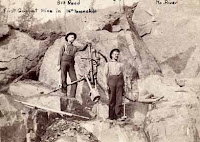 FIRE! PLEASE HELP US WE ARE TRAPPED! These were the words screamed on Saturday afternoon on March 25, 1911. It was the horrific Triangle Shirtwaist Factory fire in New York’s Greenwich Village that took the lives of 146 mostly young immigrant women and changed the course of history.
FIRE! PLEASE HELP US WE ARE TRAPPED! These were the words screamed on Saturday afternoon on March 25, 1911. It was the horrific Triangle Shirtwaist Factory fire in New York’s Greenwich Village that took the lives of 146 mostly young immigrant women and changed the course of history.
To mark the centennial anniversary and recognize the significance of the Triangle tragedy, members of the public are invited to a special free program, which will be presented at the New York State Museum Friday, March 25, at 4 p.m. to coincide with the date and time of the fire. Sponsored by the Capital District Triangle Fire Centennial Coalition, the event will honor those who lost their lives and focus on the wide range of labor, health and safety laws that required better worksites in the aftermath of the Triangle Shirtwaist fire.
State Assemblyman John McEneny will emcee the event. U.S. Representative Paul Tonko, WCNY – Syracuse News Director Susan Arbetter and Dr. Christopher Breiseth, a Frances Perkins scholar and former president of Wilkes University, and Paul Cole, Executive Director of the American Labor Studies Center will all be part of the program.
Albany Roman Catholic Diocese Bishop Howard J. Hubbard is also scheduled to participate and help close the New York State Labor-Religion Coalition annual 40-hour fast for social justice, as part of the Triangle Commemoration.
The Triangle Shirtwaist Factory was the greatest work place tragedy New York has seen, prior to the World Trade Center attacks in 2001. This tragedy changed the course of history by shining a bright light on the injustices that occur in the work place. It paved the way for the unyielding efforts to protect workers on the job and reminds us that we must not take work place safety for granted.
Frances Perkins was the first woman to hold a U.S. cabinet post when she served as secretary of labor under President Franklin D. Roosevelt in the 1930s. Perkins witnessed the Triangle fire, which galvanized her commitment to reforming labor laws. She later served on the New York State Factory Investigating Commission, which recommended reforms in the aftermath of the Triangle fire.
The Capital District Centennial Coalition includes the NYS Department of Labor, NYS Department of Education (NYS Museum, NYS Library, NYS Archives), NYS Archives Partnership Trust, American Labor Studies Center, Catherwood Library-Cornell University School of Industrial and Labor Relations, University at Albany, Capital District NY National Association of Women in Construction Chapter, Coalition of Labor Union Women-Kate Mullany Chapter Capital District, NYS Labor-Religion Coalition, Occupational and Environmental Health Center of Eastern NY, OSHA-Albany Office, NYS AFL-CIO, New York State United Teachers, Public Employees Federation, and CSEA.
NYSUT, PEF, CSEA, the New York State Department of Labor and the American Labor Studies Center provided support for the program.







